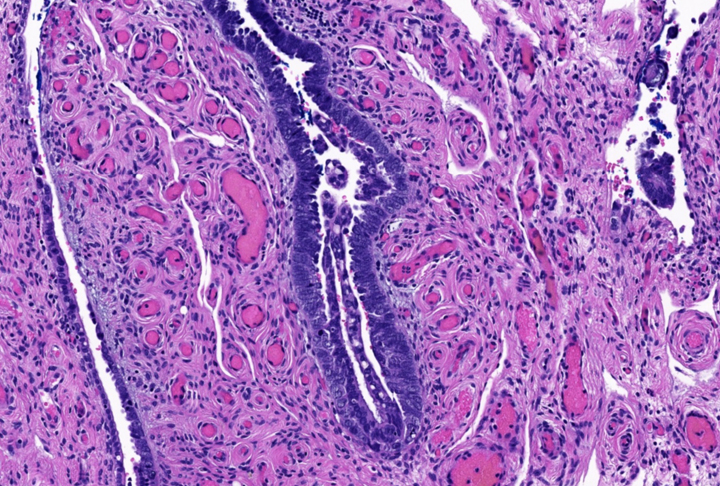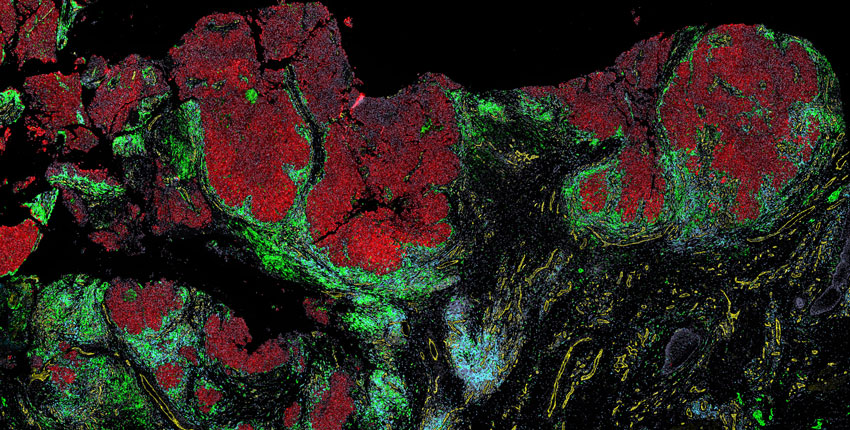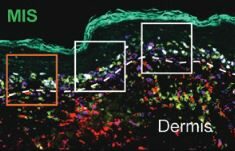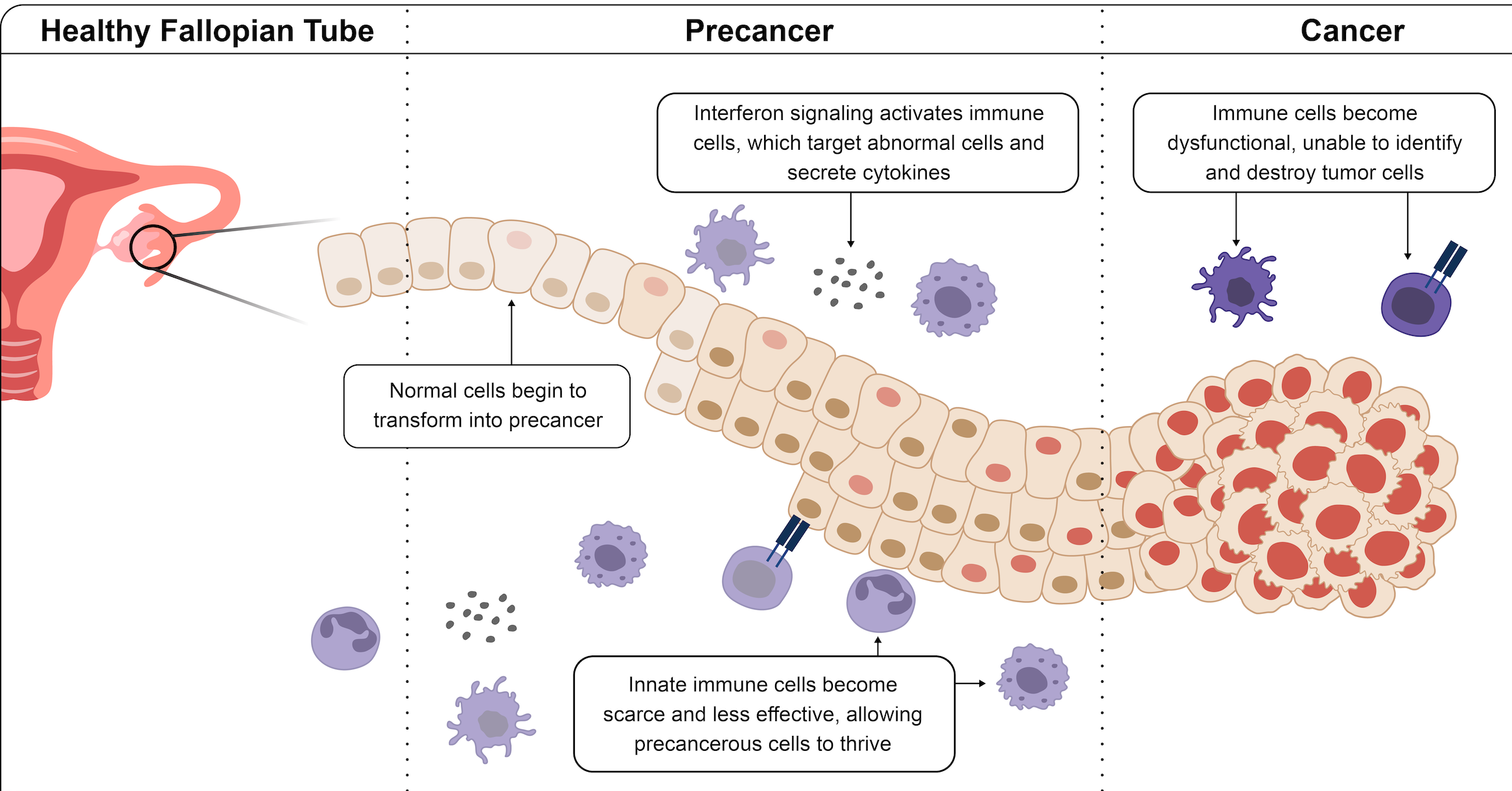Related Publications
2576724
IXMHRBF6
precancer
1
apa-cv
50
date
desc
1
1
4139
https://labsyspharm.org/wp-content/plugins/zotpress/
%7B%22status%22%3A%22success%22%2C%22updateneeded%22%3Afalse%2C%22instance%22%3Afalse%2C%22meta%22%3A%7B%22request_last%22%3A0%2C%22request_next%22%3A0%2C%22used_cache%22%3Atrue%7D%2C%22data%22%3A%5B%7B%22key%22%3A%22AJSV43N4%22%2C%22library%22%3A%7B%22id%22%3A2576724%7D%2C%22meta%22%3A%7B%22creatorSummary%22%3A%22Kader%20et%20al.%22%2C%22parsedDate%22%3A%222024-12-20%22%2C%22numChildren%22%3A2%7D%2C%22bib%22%3A%22%3Cdiv%20class%3D%5C%22csl-bib-body%5C%22%20style%3D%5C%22line-height%3A%202%3B%20padding-left%3A%201em%3B%20text-indent%3A-1em%3B%5C%22%3E%5Cn%20%20%3Cdiv%20class%3D%5C%22csl-entry%5C%22%3EKader%2C%20T.%2C%20Lin%2C%20J.-R.%2C%20Hug%2C%20C.%20B.%2C%20Coy%2C%20S.%2C%20Chen%2C%20Y.-A.%2C%20de%20Bruijn%2C%20I.%2C%20Shih%2C%20N.%2C%20Jung%2C%20E.%2C%20Pelletier%2C%20R.%20J.%2C%20Lopez%20Leon%2C%20M.%2C%20Mingo%2C%20G.%2C%20Omran%2C%20D.%20K.%2C%20Lee%2C%20J.%20S.%2C%20Yapp%2C%20C.%2C%20Satravada%2C%20B.%20A.%2C%20Kundra%2C%20R.%2C%20Xu%2C%20Y.%2C%20Chan%2C%20S.%2C%20Tefft%2C%20J.%20B.%2C%20%26%23x2026%3B%20Santagata%2C%20S.%20%282024%29.%20Multimodal%20Spatial%20Profiling%20Reveals%20Immune%20Suppression%20and%20Microenvironment%20Remodeling%20in%20Fallopian%20Tube%20Precursors%20to%20High-Grade%20Serous%20Ovarian%20Carcinoma.%20%3Ci%3ECancer%20Discovery%3C%5C%2Fi%3E.%20%3Ca%20class%3D%27zp-DOIURL%27%20target%3D%27_blank%27%20href%3D%27https%3A%5C%2F%5C%2Fdoi.org%5C%2F10.1158%5C%2F2159-8290.CD-24-1366%27%3Ehttps%3A%5C%2F%5C%2Fdoi.org%5C%2F10.1158%5C%2F2159-8290.CD-24-1366%3C%5C%2Fa%3E%3C%5C%2Fdiv%3E%5Cn%3C%5C%2Fdiv%3E%22%2C%22data%22%3A%7B%22itemType%22%3A%22journalArticle%22%2C%22title%22%3A%22Multimodal%20Spatial%20Profiling%20Reveals%20Immune%20Suppression%20and%20Microenvironment%20Remodeling%20in%20Fallopian%20Tube%20Precursors%20to%20High-Grade%20Serous%20Ovarian%20Carcinoma%22%2C%22creators%22%3A%5B%7B%22creatorType%22%3A%22author%22%2C%22firstName%22%3A%22Tanjina%22%2C%22lastName%22%3A%22Kader%22%7D%2C%7B%22creatorType%22%3A%22author%22%2C%22firstName%22%3A%22Jia-Ren%22%2C%22lastName%22%3A%22Lin%22%7D%2C%7B%22creatorType%22%3A%22author%22%2C%22firstName%22%3A%22Clemens%20B.%22%2C%22lastName%22%3A%22Hug%22%7D%2C%7B%22creatorType%22%3A%22author%22%2C%22firstName%22%3A%22Shannon%22%2C%22lastName%22%3A%22Coy%22%7D%2C%7B%22creatorType%22%3A%22author%22%2C%22firstName%22%3A%22Yu-An%22%2C%22lastName%22%3A%22Chen%22%7D%2C%7B%22creatorType%22%3A%22author%22%2C%22firstName%22%3A%22Ino%22%2C%22lastName%22%3A%22de%20Bruijn%22%7D%2C%7B%22creatorType%22%3A%22author%22%2C%22firstName%22%3A%22Natalie%22%2C%22lastName%22%3A%22Shih%22%7D%2C%7B%22creatorType%22%3A%22author%22%2C%22firstName%22%3A%22Euihye%22%2C%22lastName%22%3A%22Jung%22%7D%2C%7B%22creatorType%22%3A%22author%22%2C%22firstName%22%3A%22Roxanne%20J.%22%2C%22lastName%22%3A%22Pelletier%22%7D%2C%7B%22creatorType%22%3A%22author%22%2C%22firstName%22%3A%22Mariana%22%2C%22lastName%22%3A%22Lopez%20Leon%22%7D%2C%7B%22creatorType%22%3A%22author%22%2C%22firstName%22%3A%22Gabriel%22%2C%22lastName%22%3A%22Mingo%22%7D%2C%7B%22creatorType%22%3A%22author%22%2C%22firstName%22%3A%22Dalia%20K.%22%2C%22lastName%22%3A%22Omran%22%7D%2C%7B%22creatorType%22%3A%22author%22%2C%22firstName%22%3A%22Jong%20Suk%22%2C%22lastName%22%3A%22Lee%22%7D%2C%7B%22creatorType%22%3A%22author%22%2C%22firstName%22%3A%22Clarence%22%2C%22lastName%22%3A%22Yapp%22%7D%2C%7B%22creatorType%22%3A%22author%22%2C%22firstName%22%3A%22Baby%20A.%22%2C%22lastName%22%3A%22Satravada%22%7D%2C%7B%22creatorType%22%3A%22author%22%2C%22firstName%22%3A%22Ritika%22%2C%22lastName%22%3A%22Kundra%22%7D%2C%7B%22creatorType%22%3A%22author%22%2C%22firstName%22%3A%22Yilin%22%2C%22lastName%22%3A%22Xu%22%7D%2C%7B%22creatorType%22%3A%22author%22%2C%22firstName%22%3A%22Sabrina%22%2C%22lastName%22%3A%22Chan%22%7D%2C%7B%22creatorType%22%3A%22author%22%2C%22firstName%22%3A%22Juliann%20B.%22%2C%22lastName%22%3A%22Tefft%22%7D%2C%7B%22creatorType%22%3A%22author%22%2C%22firstName%22%3A%22Jeremy%20L.%22%2C%22lastName%22%3A%22Muhlich%22%7D%2C%7B%22creatorType%22%3A%22author%22%2C%22firstName%22%3A%22Sarah%20H.%22%2C%22lastName%22%3A%22Kim%22%7D%2C%7B%22creatorType%22%3A%22author%22%2C%22firstName%22%3A%22Stefan%20M.%22%2C%22lastName%22%3A%22Gysler%22%7D%2C%7B%22creatorType%22%3A%22author%22%2C%22firstName%22%3A%22Judith%22%2C%22lastName%22%3A%22Agudo%22%7D%2C%7B%22creatorType%22%3A%22author%22%2C%22firstName%22%3A%22James%20R.%22%2C%22lastName%22%3A%22Heath%22%7D%2C%7B%22creatorType%22%3A%22author%22%2C%22firstName%22%3A%22Nikolaus%22%2C%22lastName%22%3A%22Schultz%22%7D%2C%7B%22creatorType%22%3A%22author%22%2C%22firstName%22%3A%22Charles%20W.%22%2C%22lastName%22%3A%22Drescher%22%7D%2C%7B%22creatorType%22%3A%22author%22%2C%22firstName%22%3A%22Peter%20K.%22%2C%22lastName%22%3A%22Sorger%22%7D%2C%7B%22creatorType%22%3A%22author%22%2C%22firstName%22%3A%22Ronny%22%2C%22lastName%22%3A%22Drapkin%22%7D%2C%7B%22creatorType%22%3A%22author%22%2C%22firstName%22%3A%22Sandro%22%2C%22lastName%22%3A%22Santagata%22%7D%5D%2C%22abstractNote%22%3A%22High-Grade%20Serous%20Ovarian%20Cancer%20%28HGSOC%29%20originates%20from%20fallopian%20tube%20%28FT%29%20precursors.%20However%2C%20the%20molecular%20changes%20that%20occur%20as%20precancerous%20lesions%20progress%20to%20HGSOC%20are%20not%20well%20understood.%20To%20address%20this%2C%20we%20integrated%20high-plex%20imaging%20and%20spatial%20transcriptomics%20to%20analyze%20human%20tissue%20samples%20at%20different%20stages%20of%20HGSOC%20development%2C%20including%20p53%20signatures%2C%20serous%20tubal%20intraepithelial%20carcinomas%20%28STIC%29%2C%20and%20invasive%20HGSOC.%20Our%20findings%20reveal%20immune%20modulating%20mechanisms%20within%20precursor%20epithelium%2C%20characterized%20by%20chromosomal%20instability%2C%20persistent%20interferon%20%28IFN%29%20signaling%2C%20and%20dysregulated%20innate%20and%20adaptive%20immunity.%20FT%20precursors%20display%20elevated%20expression%20of%20MHC-class%20I%2C%20including%20HLA-E%2C%20and%20IFN-stimulated%20genes%2C%20typically%20linked%20to%20later-stage%20tumorigenesis.%20These%20molecular%20alterations%20coincide%20with%20progressive%20shifts%20in%20the%20tumor%20microenvironment%2C%20transitioning%20from%20immune%20surveillance%20in%20early%20STICs%20to%20immune%20suppression%20in%20advanced%20STICs%20and%20cancer.%20These%20insights%20identify%20potential%20biomarkers%20and%20therapeutic%20targets%20for%20HGSOC%20interception%20and%20clarify%20the%20molecular%20transitions%20from%20precancer%20to%20cancer.%22%2C%22date%22%3A%222024-12-20%22%2C%22language%22%3A%22eng%22%2C%22DOI%22%3A%2210.1158%5C%2F2159-8290.CD-24-1366%22%2C%22ISSN%22%3A%222159-8290%22%2C%22url%22%3A%22%22%2C%22collections%22%3A%5B%22IXMHRBF6%22%5D%2C%22dateModified%22%3A%222025-01-28T21%3A21%3A09Z%22%7D%7D%2C%7B%22key%22%3A%22YKGLYMJE%22%2C%22library%22%3A%7B%22id%22%3A2576724%7D%2C%22meta%22%3A%7B%22creatorSummary%22%3A%22Yapp%20et%20al.%22%2C%22parsedDate%22%3A%222023-11-15%22%2C%22numChildren%22%3A4%7D%2C%22bib%22%3A%22%3Cdiv%20class%3D%5C%22csl-bib-body%5C%22%20style%3D%5C%22line-height%3A%202%3B%20padding-left%3A%201em%3B%20text-indent%3A-1em%3B%5C%22%3E%5Cn%20%20%3Cdiv%20class%3D%5C%22csl-entry%5C%22%3EYapp%2C%20C.%2C%20Nirmal%2C%20A.%20J.%2C%20Zhou%2C%20F.%20Y.%2C%20Wong%2C%20A.%20Y.%20H.%2C%20Tefft%2C%20J.%2C%20Lu%2C%20Y.%20D.%2C%20Shang%2C%20Z.%2C%20Maliga%2C%20Z.%2C%20Montero%20Llopis%2C%20P.%2C%20Murphy%2C%20G.%20F.%2C%20Lian%2C%20C.%2C%20Danuser%2C%20G.%2C%20Santagata%2C%20S.%2C%20%26amp%3B%20Sorger%2C%20P.%20K.%20%282023%29.%20%3Ci%3EHighly%20Multiplexed%203D%20Profiling%20of%20Cell%20States%20and%20Immune%20Niches%20in%20Human%20Tumours%3C%5C%2Fi%3E%20%5BPreprint%5D.%20bioRxiv.%20%3Ca%20class%3D%27zp-DOIURL%27%20target%3D%27_blank%27%20href%3D%27https%3A%5C%2F%5C%2Fdoi.org%5C%2F10.1101%5C%2F2023.11.10.566670%27%3Ehttps%3A%5C%2F%5C%2Fdoi.org%5C%2F10.1101%5C%2F2023.11.10.566670%3C%5C%2Fa%3E%3C%5C%2Fdiv%3E%5Cn%3C%5C%2Fdiv%3E%22%2C%22data%22%3A%7B%22itemType%22%3A%22preprint%22%2C%22title%22%3A%22Highly%20Multiplexed%203D%20Profiling%20of%20Cell%20States%20and%20Immune%20Niches%20in%20Human%20Tumours%22%2C%22creators%22%3A%5B%7B%22creatorType%22%3A%22author%22%2C%22firstName%22%3A%22Clarence%22%2C%22lastName%22%3A%22Yapp%22%7D%2C%7B%22creatorType%22%3A%22author%22%2C%22firstName%22%3A%22Ajit%20J%22%2C%22lastName%22%3A%22Nirmal%22%7D%2C%7B%22creatorType%22%3A%22author%22%2C%22firstName%22%3A%22Felix%20Yuran%22%2C%22lastName%22%3A%22Zhou%22%7D%2C%7B%22creatorType%22%3A%22author%22%2C%22firstName%22%3A%22Alex%20Yu%20Hin%22%2C%22lastName%22%3A%22Wong%22%7D%2C%7B%22creatorType%22%3A%22author%22%2C%22firstName%22%3A%22Juliann%22%2C%22lastName%22%3A%22Tefft%22%7D%2C%7B%22creatorType%22%3A%22author%22%2C%22firstName%22%3A%22Yi%20Daniel%22%2C%22lastName%22%3A%22Lu%22%7D%2C%7B%22creatorType%22%3A%22author%22%2C%22firstName%22%3A%22Zhiguo%22%2C%22lastName%22%3A%22Shang%22%7D%2C%7B%22creatorType%22%3A%22author%22%2C%22firstName%22%3A%22Zoltan%22%2C%22lastName%22%3A%22Maliga%22%7D%2C%7B%22creatorType%22%3A%22author%22%2C%22firstName%22%3A%22Paula%22%2C%22lastName%22%3A%22Montero%20Llopis%22%7D%2C%7B%22creatorType%22%3A%22author%22%2C%22firstName%22%3A%22George%20F%22%2C%22lastName%22%3A%22Murphy%22%7D%2C%7B%22creatorType%22%3A%22author%22%2C%22firstName%22%3A%22Christine%22%2C%22lastName%22%3A%22Lian%22%7D%2C%7B%22creatorType%22%3A%22author%22%2C%22firstName%22%3A%22Gaudenz%22%2C%22lastName%22%3A%22Danuser%22%7D%2C%7B%22creatorType%22%3A%22author%22%2C%22firstName%22%3A%22Sandro%22%2C%22lastName%22%3A%22Santagata%22%7D%2C%7B%22creatorType%22%3A%22author%22%2C%22firstName%22%3A%22Peter%20Karl%22%2C%22lastName%22%3A%22Sorger%22%7D%5D%2C%22abstractNote%22%3A%22Diseases%20like%20cancer%20involve%20alterations%20in%20in%20cell%20proportions%2C%20states%2C%20and%20local%20interactions%20as%20well%20as%20complex%20changes%20in%203D%20tissue%20architecture.%20However%2C%20disease%20diagnosis%20and%20most%20multiplexed%20spatial%20profiling%20studies%20rely%20on%20inspecting%20thin%20%284-5%20micron%29%20tissue%20specimens.%20Here%2C%20we%20use%20confocal%20microscopy%20and%20cyclic%20immunofluorescence%20%283D%20CyCIF%29%20to%20show%20that%20few%20if%20any%20cells%20are%20intact%20in%20these%20thin%20sections%3B%20this%20reduces%20the%20accuracy%20of%20cell%20phenotyping%20and%20interaction%20analysis.%20In%20contrast%2C%20high-plex%203D%20CyCIF%20imaging%20of%20intact%20cells%20in%20thick%20tissue%20sections%20enables%20accurate%20quantification%20of%20marker%20proteins%20and%20detailed%20analysis%20of%20intracellular%20structures%20and%20organelles.%20Precise%20imaging%20of%20cell%20membranes%20also%20makes%20it%20possible%20to%20detect%20juxtacrine%20signalling%20among%20interacting%20tumour%20and%20immune%20cells%20and%20reveals%20the%20formation%20of%20spatially-restricted%20cytokine%20niches.%20Thus%2C%203D%20CyCIF%20provides%20insights%20into%20cell%20states%20and%20morphologies%20in%20preserved%20human%20tissues%20at%20a%20level%20of%20detail%20previously%20limited%20to%20cultured%20cells.%22%2C%22genre%22%3A%22preprint%22%2C%22repository%22%3A%22bioRxiv%22%2C%22archiveID%22%3A%22%22%2C%22date%22%3A%222023-11-15%22%2C%22DOI%22%3A%2210.1101%5C%2F2023.11.10.566670%22%2C%22citationKey%22%3A%22%22%2C%22url%22%3A%22http%3A%5C%2F%5C%2Fbiorxiv.org%5C%2Flookup%5C%2Fdoi%5C%2F10.1101%5C%2F2023.11.10.566670%22%2C%22language%22%3A%22en%22%2C%22collections%22%3A%5B%22IXMHRBF6%22%5D%2C%22dateModified%22%3A%222025-04-28T14%3A35%3A35Z%22%7D%7D%2C%7B%22key%22%3A%22RDKDE8NJ%22%2C%22library%22%3A%7B%22id%22%3A2576724%7D%2C%22meta%22%3A%7B%22lastModifiedByUser%22%3A%7B%22id%22%3A9036456%2C%22username%22%3A%22jtefft%22%2C%22name%22%3A%22%22%2C%22links%22%3A%7B%22alternate%22%3A%7B%22href%22%3A%22https%3A%5C%2F%5C%2Fwww.zotero.org%5C%2Fjtefft%22%2C%22type%22%3A%22text%5C%2Fhtml%22%7D%7D%7D%2C%22creatorSummary%22%3A%22Nirmal%20et%20al.%22%2C%22parsedDate%22%3A%222022-06-02%22%2C%22numChildren%22%3A4%7D%2C%22bib%22%3A%22%3Cdiv%20class%3D%5C%22csl-bib-body%5C%22%20style%3D%5C%22line-height%3A%202%3B%20padding-left%3A%201em%3B%20text-indent%3A-1em%3B%5C%22%3E%5Cn%20%20%3Cdiv%20class%3D%5C%22csl-entry%5C%22%3ENirmal%2C%20A.%20J.%2C%20Maliga%2C%20Z.%2C%20Vallius%2C%20T.%2C%20Quattrochi%2C%20B.%2C%20Chen%2C%20A.%20A.%2C%20Jacobson%2C%20C.%20A.%2C%20Pelletier%2C%20R.%20J.%2C%20Yapp%2C%20C.%2C%20Arias-Camison%2C%20R.%2C%20Chen%2C%20Y.-A.%2C%20Lian%2C%20C.%20G.%2C%20Murphy%2C%20G.%20F.%2C%20Santagata%2C%20S.%2C%20%26amp%3B%20Sorger%2C%20P.%20K.%20%282022%29.%20The%20spatial%20landscape%20of%20progression%20and%20immunoediting%20in%20primary%20melanoma%20at%20single-cell%20resolution.%20%3Ci%3ECancer%20Discovery%3C%5C%2Fi%3E%2C%20%3Ci%3E12%3C%5C%2Fi%3E%286%29%2C%201518%26%23x2013%3B1541.%20%3Ca%20class%3D%27zp-DOIURL%27%20target%3D%27_blank%27%20href%3D%27https%3A%5C%2F%5C%2Fdoi.org%5C%2F10.1158%5C%2F2159-8290.CD-21-1357%27%3Ehttps%3A%5C%2F%5C%2Fdoi.org%5C%2F10.1158%5C%2F2159-8290.CD-21-1357%3C%5C%2Fa%3E%3C%5C%2Fdiv%3E%5Cn%3C%5C%2Fdiv%3E%22%2C%22data%22%3A%7B%22itemType%22%3A%22journalArticle%22%2C%22title%22%3A%22The%20spatial%20landscape%20of%20progression%20and%20immunoediting%20in%20primary%20melanoma%20at%20single-cell%20resolution%22%2C%22creators%22%3A%5B%7B%22creatorType%22%3A%22author%22%2C%22firstName%22%3A%22Ajit%20J.%22%2C%22lastName%22%3A%22Nirmal%22%7D%2C%7B%22creatorType%22%3A%22author%22%2C%22firstName%22%3A%22Zoltan%22%2C%22lastName%22%3A%22Maliga%22%7D%2C%7B%22creatorType%22%3A%22author%22%2C%22firstName%22%3A%22Tuulia%22%2C%22lastName%22%3A%22Vallius%22%7D%2C%7B%22creatorType%22%3A%22author%22%2C%22firstName%22%3A%22Brian%22%2C%22lastName%22%3A%22Quattrochi%22%7D%2C%7B%22creatorType%22%3A%22author%22%2C%22firstName%22%3A%22Alyce%20A.%22%2C%22lastName%22%3A%22Chen%22%7D%2C%7B%22creatorType%22%3A%22author%22%2C%22firstName%22%3A%22Connor%20A.%22%2C%22lastName%22%3A%22Jacobson%22%7D%2C%7B%22creatorType%22%3A%22author%22%2C%22firstName%22%3A%22Roxanne%20J.%22%2C%22lastName%22%3A%22Pelletier%22%7D%2C%7B%22creatorType%22%3A%22author%22%2C%22firstName%22%3A%22Clarence%22%2C%22lastName%22%3A%22Yapp%22%7D%2C%7B%22creatorType%22%3A%22author%22%2C%22firstName%22%3A%22Raquel%22%2C%22lastName%22%3A%22Arias-Camison%22%7D%2C%7B%22creatorType%22%3A%22author%22%2C%22firstName%22%3A%22Yu-An%22%2C%22lastName%22%3A%22Chen%22%7D%2C%7B%22creatorType%22%3A%22author%22%2C%22firstName%22%3A%22Christine%20G.%22%2C%22lastName%22%3A%22Lian%22%7D%2C%7B%22creatorType%22%3A%22author%22%2C%22firstName%22%3A%22George%20F.%22%2C%22lastName%22%3A%22Murphy%22%7D%2C%7B%22creatorType%22%3A%22author%22%2C%22firstName%22%3A%22Sandro%22%2C%22lastName%22%3A%22Santagata%22%7D%2C%7B%22creatorType%22%3A%22author%22%2C%22firstName%22%3A%22Peter%20K.%22%2C%22lastName%22%3A%22Sorger%22%7D%5D%2C%22abstractNote%22%3A%22Cutaneous%20melanoma%20is%20a%20highly%20immunogenic%20malignancy%20that%20is%20surgically%20curable%20at%20early%20stages%20but%20life-threatening%20when%20metastatic.%20Here%20we%20integrate%20high-plex%20imaging%2C%203D%20high-resolution%20microscopy%2C%20and%20spatially%20resolved%20microregion%20transcriptomics%20to%20study%20immune%20evasion%20and%20immunoediting%20in%20primary%20melanoma.%20We%20find%20that%20recurrent%20cellular%20neighborhoods%20involving%20tumor%2C%20immune%2C%20and%20stromal%20cells%20change%20significantly%20along%20a%20progression%20axis%20involving%20precursor%20states%2C%20melanoma%20in%20situ%2C%20and%20invasive%20tumor.%20Hallmarks%20of%20immunosuppression%20are%20already%20detectable%20in%20precursor%20regions.%20When%20tumors%20become%20locally%20invasive%2C%20a%20consolidated%20and%20spatially%20restricted%20suppressive%20environment%20forms%20along%20the%20tumor-stromal%20boundary.%20This%20environment%20is%20established%20by%20cytokine%20gradients%20that%20promote%20expression%20of%20MHC-II%20and%20IDO1%2C%20and%20by%20PD1-PDL1-mediated%20cell%20contacts%20involving%20macrophages%2C%20dendritic%20cells%2C%20and%20T%20cells.%20A%20few%20millimeters%20away%2C%20cytotoxic%20T%20cells%20synapse%20with%20melanoma%20cells%20in%20fields%20of%20tumor%20regression.%20Thus%2C%20invasion%20and%20immunoediting%20can%20coexist%20within%20a%20few%20millimeters%20of%20each%20other%20in%20a%20single%20specimen.%5CnSIGNIFICANCE%3A%20The%20reorganization%20of%20the%20tumor%20ecosystem%20in%20primary%20melanoma%20is%20an%20excellent%20setting%20in%20which%20to%20study%20immunoediting%20and%20immune%20evasion.%20Guided%20by%20classic%20histopathology%2C%20spatial%20profiling%20of%20proteins%20and%20mRNA%20reveals%20recurrent%20morphologic%20and%20molecular%20features%20of%20tumor%20evolution%20that%20involve%20localized%20paracrine%20cytokine%20signaling%20and%20direct%20cell-cell%20contact.%20This%20article%20is%20highlighted%20in%20the%20In%20This%20Issue%20feature%2C%20p.%201397.%22%2C%22date%22%3A%222022-06-02%22%2C%22language%22%3A%22eng%22%2C%22DOI%22%3A%2210.1158%5C%2F2159-8290.CD-21-1357%22%2C%22ISSN%22%3A%222159-8290%22%2C%22url%22%3A%22%22%2C%22collections%22%3A%5B%22IXMHRBF6%22%5D%2C%22dateModified%22%3A%222025-01-28T21%3A21%3A24Z%22%7D%7D%5D%7D
Kader, T., Lin, J.-R., Hug, C. B., Coy, S., Chen, Y.-A., de Bruijn, I., Shih, N., Jung, E., Pelletier, R. J., Lopez Leon, M., Mingo, G., Omran, D. K., Lee, J. S., Yapp, C., Satravada, B. A., Kundra, R., Xu, Y., Chan, S., Tefft, J. B., … Santagata, S. (2024). Multimodal Spatial Profiling Reveals Immune Suppression and Microenvironment Remodeling in Fallopian Tube Precursors to High-Grade Serous Ovarian Carcinoma.
Cancer Discovery.
https://doi.org/10.1158/2159-8290.CD-24-1366
Yapp, C., Nirmal, A. J., Zhou, F. Y., Wong, A. Y. H., Tefft, J., Lu, Y. D., Shang, Z., Maliga, Z., Montero Llopis, P., Murphy, G. F., Lian, C., Danuser, G., Santagata, S., & Sorger, P. K. (2023).
Highly Multiplexed 3D Profiling of Cell States and Immune Niches in Human Tumours [Preprint]. bioRxiv.
https://doi.org/10.1101/2023.11.10.566670
Nirmal, A. J., Maliga, Z., Vallius, T., Quattrochi, B., Chen, A. A., Jacobson, C. A., Pelletier, R. J., Yapp, C., Arias-Camison, R., Chen, Y.-A., Lian, C. G., Murphy, G. F., Santagata, S., & Sorger, P. K. (2022). The spatial landscape of progression and immunoediting in primary melanoma at single-cell resolution.
Cancer Discovery,
12(6), 1518–1541.
https://doi.org/10.1158/2159-8290.CD-21-1357







